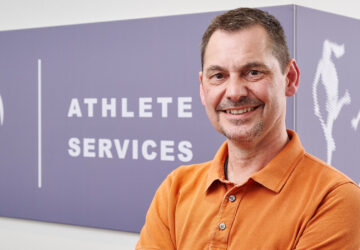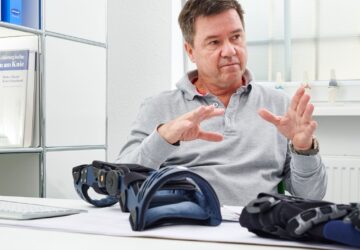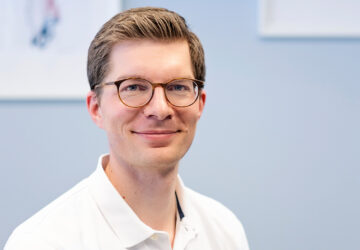In short Progressive osteoarthritis treatment aims to respond to the individual needs and life situations of patients, helping them regain mobility. Modern medical aids can support this process, provided they are proven to be effective, practical for everyday use, and can be applied in a differentiated manner. Two experts from medicine and movement science discuss these and other aspects, offering insights and outlooks on managing one of the most pressing challenges in everyday practice work today.
Supports·Orthosis·Arthrosis·Knee pain·Gonarthrosis
Opportunities for joint preservation
Two experts discuss progress in treating osteoarthritis.
From Bauerfeind Life on 14.10.2025

Prof. Dr. Stefan Sell, Medical Director at Black Forest Joint Center, and Dr. Bernd Stetter, Biomechanics Expert and Movement Scientist, work in osteoarthritis research at Karlsruhe Institute of Technology (KIT), cooperating with industry partners to conduct study projects. Together, they explore new methods for treating this widespread condition, and work on producing required evidence: an era of conservative treatment is emerging – with innovative medical aids and their differentiated use for joint preservation.
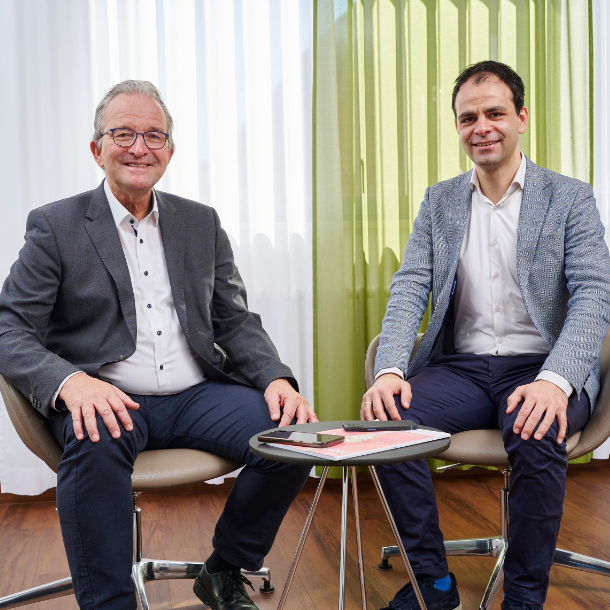
Prof. Sell: The most interesting development in recent years has doubtlessly been the change in what osteoarthritis patients are expecting. 50-year-olds still want to keep up with others when playing tennis and 80-year-olds don’t want to stop exercising. Increasing numbers of patients with early or mid-stage osteoarthritis visit orthopedic practices. We must be able to offer more options for long-term treatment to these people in particular.
Dr. Stetter: It’s essential to help younger patients stay active during the early stages of the condition. Physical activity reflects quality of life and is key for joint preservation at the same time. A highly complex, hugely relieving brace isn’t needed in these cases. Medical products, such as compression supports or soft braces, which are often tolerated more effectively, also play an important part so patients can stay as active and pain-free as possible. As a biomechanics expert and movement scientist, I consider the mechanical load on a joint a crucial factor that exacerbates the increasing degeneration of cartilage. The longer a patient can be treated using conservative options in the lower range of the treatment pyramid, the better for joint preservation.
“In the past, you had to choose between a support or a hard-frame brace. Today, the choice is not just wider, it can also be differentiated more effectively.”
Prof. Dr. Stefan Sell
Prof. Sell: That’s a good image. I’d like to add that three measures are pivotal in this lower range of the pyramid: weight reduction, a change in diet, and exercise. These can delay the condition from progressing. If we then look at the pyramid all the way to the top and the increasing symptoms, we’ll see that, for conservative treatment, we need a consistent concept for the different stages using medical products. In the past, you had to choose between a support or a hard-frame brace. There was practically nothing in between. Nowadays, we can adjust the degree of relief much more specifically in technical orthopedics. The choice is not just wider, it can also be differentiated more effectively, thanks to new products. Without all these differentiated medical products, patients couldn’t do many of their activities, or only with limitations. That’s an enormous gain for joint-preserving treatment, even though the following applies of course: the effectiveness of medical products, especially when they’re new, must be proven. Only with the relevant evidence can they be established in practical use and in guidelines.
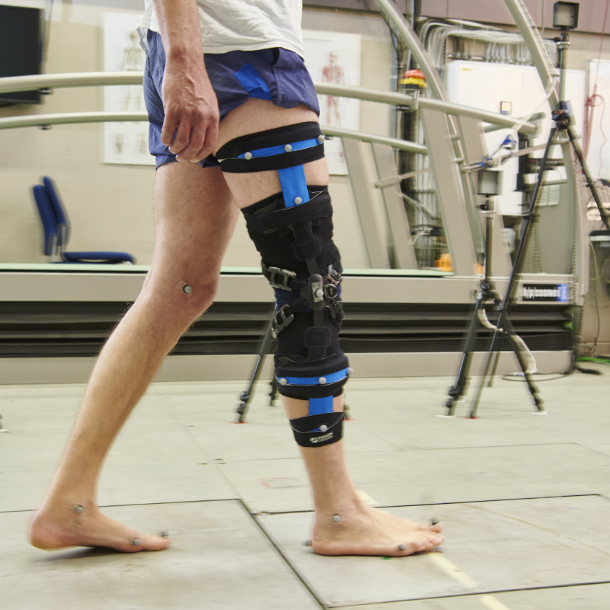
Dr. Stetter: At any rate, we’ve noticed a broader spectrum in osteoarthritis treatment and an evolving market. Insights from monitoring use and case studies provide information about acceptance and what effects the products have on patients suffering from osteoarthritis. They can give physicians ideas for possible treatment methods. In addition, interventional studies are important to supply required scientific evidence for modes of action. This brings us to complex study designs with controlled conditions that take clinical and biomechanical aspects into account. What effects does a specific product exert on joint kinematics and kinetics? Where and how can these be measured? The example of orthopedic foot orthoses shows how comprehensive our methodological and analytical view of the human body has to be: we intervene in the area of the foot, and the connection with the lower leg, thigh, and hip has an effect in these regions and possibly beyond.
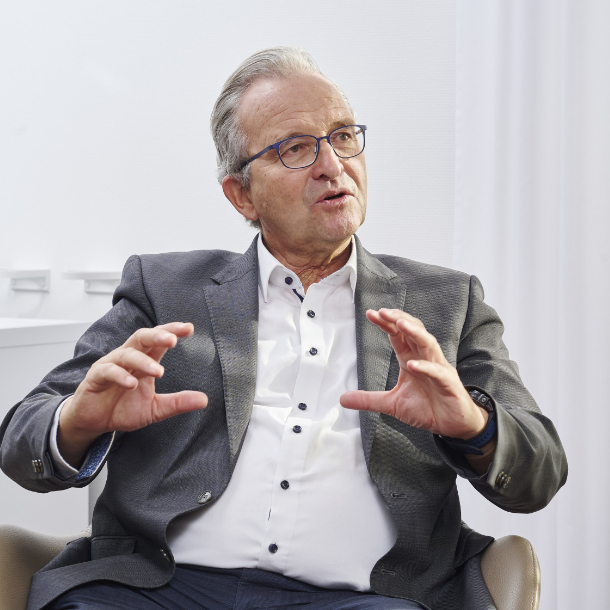
Prof. Sell: Effects can additionally occur that nobody expected before the study began. A study relating to osteoarthritis of the hip conducted by KIT using the CoxaTrain provided evidence that the hip brace influences the entire lumbar, pelvic and hip region, and increased functional movement occurs.[1] During a study using the GenuTrain OA, a sensor that was used for the first time, which measures energy consumption, showed that this relieving brace can help patients suffering from osteoarthritis of the knee perform more intensive, physical activities.[2] So my conclusion is: studies must have a comprehensive design so that fringe effects can also be recorded.
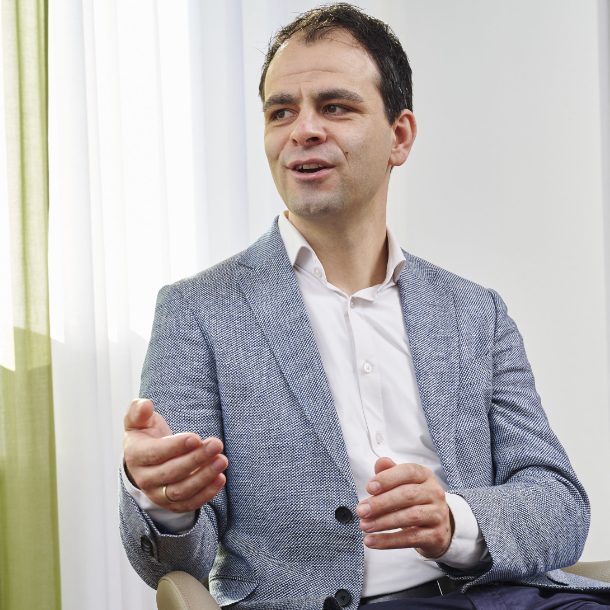
Dr. Stetter: We also have to think on an international level when it comes to product development and evaluation research. Osteoarthritis is a global challenge. In a treatment context, different national healthcare systems and treatment structures must be considered. We’re working in a very complex medical technology sector. Integrating these requirements demands a progressive process of innovation and scientific support. This is the only way to globally generate medical acceptance and to strengthen the provision of medical aids as a treatment component.
Prof. Sell: That’s an important aspect. Medical aids must always be regarded in combination with other forms of treatment. The assumption that osteoarthritis, as a degenerative process, has purely mechanical reasons, has been outdated for decades. Inflammatory and metabolic processes play a key role, turning nutrition into an influencing factor. How patients deal with their condition is also pivotal. Many of my patients carry out specific exercises to develop muscles, as well as physiotherapy, even as a preventive measure. Osteoarthritis often progresses in a wave shape. By exercising, my patients can keep the waves down.
“The important thing is that the quality is right during research and development so that a medical device can be produced in the end that is proven to help.”
Dr. Bernd Stetter
Dr. Stetter: And using medical aids is not a contradiction to exercise or physiotherapy. Quite the opposite. Their interaction, no matter at what stage of the condition, can have a positive effect, provided that the individual’s current resilience is not exceeded. Bio feedback systems and digital solutions offer new opportunities to slow down the progression of osteoarthritis.
Prof. Sell: Treating osteoarthritis is a challenge. Current studies show how high demand is even today. The number of those affected has increased globally since the last century, even if you take higher life expectancy into account. In Germany alone, five million are affected. Osteoarthritis is therefore not only dependent on age. It’s a process based on many factors.
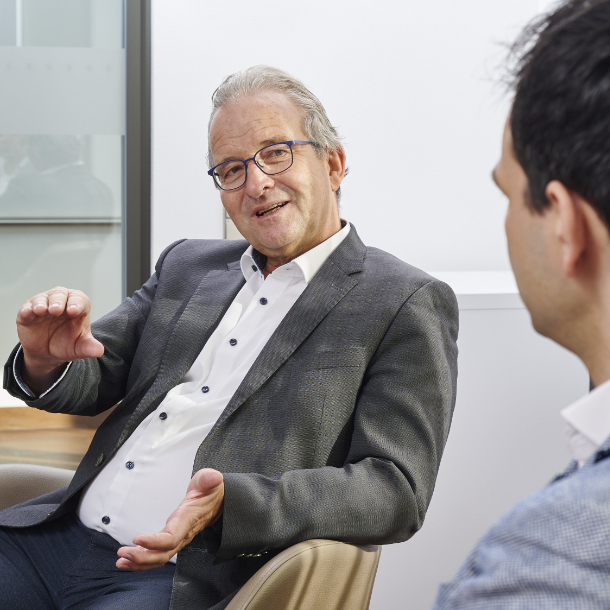
With a highly individual profile: the structure quality of the cartilage layer can vary genetically. The effects of training change resilience. For one person, 10,000 steps per day are ideal, for another 6,000. When it comes to medical products, I therefore see the future in their further differentiation. A greater number of special products for more specific treatment requirements. And I see it in new types of products that use digital opportunities.
Dr. Stetter: Tried-and-tested orthopedic aids will most likely continue to exist but I can image, for example, combining different treatment methods and implementing them in a single product. Aspects of self-management could play a role here. The important thing is that the quality is right during research and development so that a medical device can be produced in the end that is proven to help patients happily live with osteoarthritis.
[1] Steingrebe, H., Stetter, B.,J., Sell, S., Stein, T. Effects of Hip Bracing on Gait Biomechanics, Pain and Function in Subjects With Mild to Moderate Hip Osteoarthritis. Frontiers in Bioengineering and Biotechnology_July 2022_Volume 10_Article 888775 [Article DOI: 10.3389/fbioe.2022.888775]
[2] Stetter, Bernd J., Janis Fiedler, Michèle Arndt, Thorsten Stein, and Stefan Sell. 2024. “Impact of a Semi-Rigid Knee Orthotic Intervention on Pain, Physical Activity, and Functional Capacity in Patients with Medial Knee Osteoarthritis” Journal of Clinical Medicine 13, no. 6: 1535. https://doi.org/10.3390/jcm13061535.
Pictures: Udo Schönewald, Bauerfeind AG
Related topics
Product-Finder App

This app greatly simplifies the selection of suitable medical aids for doctors and specialist dealers. With its intuitive usability, information on Bauerfeind products is available everywhere – quickly and easily
